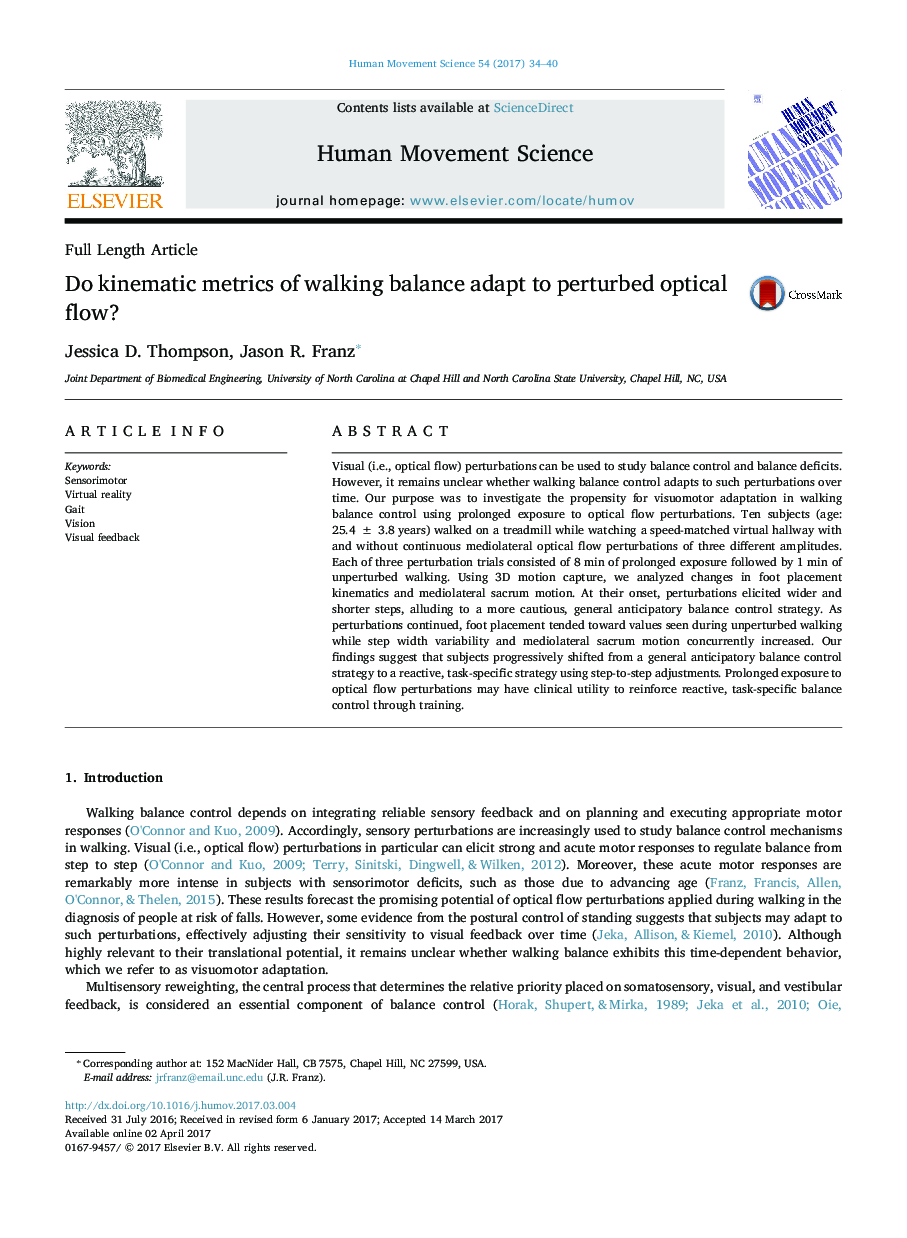| Article ID | Journal | Published Year | Pages | File Type |
|---|---|---|---|---|
| 5041964 | Human Movement Science | 2017 | 7 Pages |
â¢A virtual reality environment perturbed optical flow during treadmill walking.â¢Investigated propensity for visuomotor adaptation in walking balance control.â¢Gait kinematics and CoM motion exhibited time-dependent effects of perturbations.â¢At their onset, perturbations elicit a general anticipatory balance control.â¢Subjects shift to reactive, task-specific balance control as perturbations continue.
Visual (i.e., optical flow) perturbations can be used to study balance control and balance deficits. However, it remains unclear whether walking balance control adapts to such perturbations over time. Our purpose was to investigate the propensity for visuomotor adaptation in walking balance control using prolonged exposure to optical flow perturbations. Ten subjects (age: 25.4 ± 3.8 years) walked on a treadmill while watching a speed-matched virtual hallway with and without continuous mediolateral optical flow perturbations of three different amplitudes. Each of three perturbation trials consisted of 8 min of prolonged exposure followed by 1 min of unperturbed walking. Using 3D motion capture, we analyzed changes in foot placement kinematics and mediolateral sacrum motion. At their onset, perturbations elicited wider and shorter steps, alluding to a more cautious, general anticipatory balance control strategy. As perturbations continued, foot placement tended toward values seen during unperturbed walking while step width variability and mediolateral sacrum motion concurrently increased. Our findings suggest that subjects progressively shifted from a general anticipatory balance control strategy to a reactive, task-specific strategy using step-to-step adjustments. Prolonged exposure to optical flow perturbations may have clinical utility to reinforce reactive, task-specific balance control through training.
